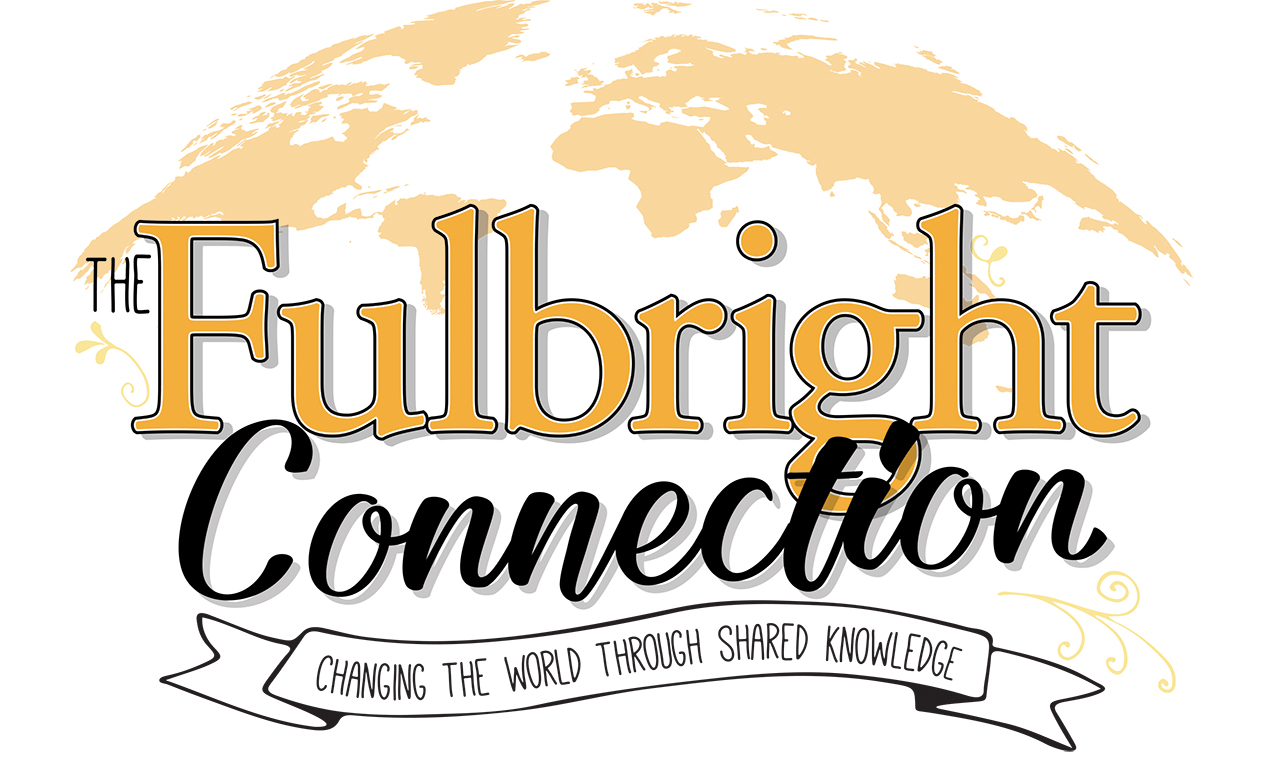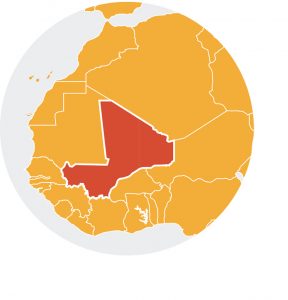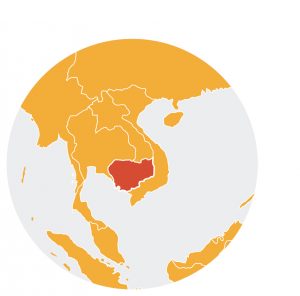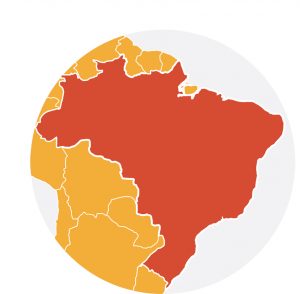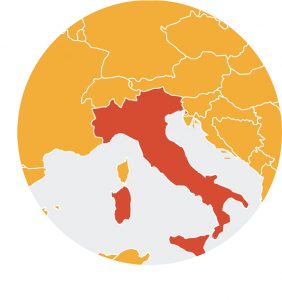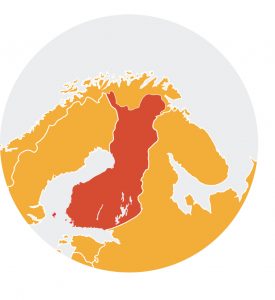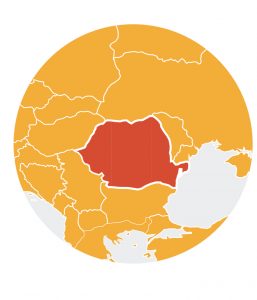In 1946 war-ravaged cities sprawled across Europe, Africa, the Middle East, and Asia, as the world struggled to wake from the daily fear and destruction of World War II. Into this wary world, United States Sen. J. William Fulbright of Arkansas proposed a radical idea—connect some of the world’s brightest people in an effort to build long-lasting peace.
The Fulbright Program, now sponsored by the U.S. Department of State’s Bureau of Educational and Cultural Affairs, aimed to create a platform to exchange ideas, but also a means of reshaping the world in understanding. Over its 70-plus-year history, more than 370,000 scholars have taken part in the prestigious program, including at least 50 who teach at Illinois State University today.
Appears In
Dynamic duo laser in on physics’ deepest questions
Ask a Redbird Scholar: What is bitcoin?
Research center spotlight: Ethnicity and Ethnography Laboratory and Research Center
Lights, camera, risers—Friends of the Arts grant helps bring audience center stage
Decoding the mutant, all-female, self-cloning crayfish
The Q&A with Andrew Hartman: Did the culture wars ever end?
Ask a Redbird Scholar: Why is higher education so liberal?
Protecting pets and their owners during natural disasters
Redbird media: Latest creative works by ISU faculty
Wine trails: A lesson in cooperation
Ask a Redbird Scholar: What does it take to impeach a president?
Ask a Redbird Scholar: What exactly did Stephen Hawking contribute to our understanding of the universe?
“Yes, Fulbright is about making strides in important research, but it is also about immersing yourself in the culture and bringing that knowledge home,” said Associate Professor of Education Erin Mikulec, the University’s Fulbright scholar liaison.
Mikulec’s own Fulbright journey, studying education and teacher preparation in Helsinki, in 2014, continues to shape her lessons in the classroom, and inspired a spring break program that will bring Illinois State education students to Finland. “Finland is considered one of the most forward-thinking in the world when it comes to education,” said Mikulec. “And our students will be able to experience and draw from it. That is what Fulbright does.”
A few of Illinois State’s Fulbright scholars shared their experiences and the ongoing impact of the program.
Smashing stereotypes of indigenous cities
Picture the remains of an ancient city. Most will envision ruins of aqueducts, castles, or stepped pyramids. Yet no such monuments to man power called to archaeologists in the lush lands of Mali in West Africa.
“For centuries, scholars argued there were no indigenous cities in Africa, because they didn’t look like what Western scholars expected,” said Abigail Stone, an assistant professor of anthropology who examines the movement of human populations over the past 2,000 years. Stone’s research, first supported with a Fulbright student award in her doctoral studies, helped break the stereotypes.
Working with the Culture Heritage Ministry in Mali in 2010, Stone excavated two sites and explored artifacts from the Djenne region, which was home to one of the earliest cities in sub-Saharan Africa. “It thrived along a floodplain and became the area’s breadbasket without the need for intensive agricultural practices like irrigation, or hierarchy,” said Stone. “You don’t like the city’s leader? Move 20 kilometers away; the land is just as lush.”
Buildings of mud brick—or adobe—functioned well, but wore away and buried artifacts over time.
Archaeological sites in the area “essentially look like large mounds,” said Stone. “They do not fit the model of what archaeologists thought cities were.” Stone continues to provide people a deeper understanding of ancient civilizations across Africa, and her work has taken her to Cameroon, Zambia, Senegal, and Ethiopia.
Stone longs to return to Mali, though a coup d’etat in 2012 and subsequent unrest has made the area dangerous for Western scholars. “There are relationships I have cultivated with people in Mali, and I don’t know how they are doing. I don’t know how Djenne is faring. But I will always have a desire to go back.”
Revamping studies—for an entire nation
Stone was not alone in her partnership with government ministries to bring about scholarly understanding through Fulbright. Professor of Education Do-Yong Park and Professor of Technology Anu Gokhale traveled to opposite parts of the globe, both carrying their knowledge and research of STEM+C, or the method of teaching science, technology, engineering, mathematics, and computing.
With his Fulbright grant, Park responded to an invitation from the Ministry of Education, Youth, and Sports in Cambodia in spring 2018. “Eventually, I hope to see Cambodia’s K–12 schools ready to teach STEM education across all 25 provinces,” said Park. Working in Cambodia’s capital, Phnom Penh, Park created a STEM Education Task Force that held workshops for teachers, principals, and government officials to implement STEM education systematically. “There is little understanding, knowledge, and methodology about STEM, and little curricular materials available due to a lack of financial support,” he said.
Within the diverse cultures and languages of Cambodia, seeing the deep divide between the haves and have-nots inspired Park to look beyond standard approaches. “I founded a nonprofit organization to help fund a vocation program through the ministry,” said Park, who noted more than 150 high school graduates have benefitted from jobs that range from cell phone repair to welding.
The Brazilian state of Pernambuco called Gokhale to employ her expertise in STEM+C. “A study done by the Brazilian government concluded that STEM competency among managers leads to higher revenue in business and industry,” said Gokhale, who traveled on a Fulbright in 2017. Gokhale’s research on recruitment, retention, and professional development of STEM+C students has been funded by the National Science Foundation and the Department of Education for more than a decade.
Facing a need for enhancing STEM competency in schools, colleges, and businesses, Gokhale partnered with the University of Pernambuco and Brazil’s Secretariat of Science, Technology, and Innovation (SECTI) to hold workshops and discussions on finding ways to improve STEM education in the state of Pernambuco and across the nation. “Those meetings initiated the launch of many significant projects in STEM+C for Brazil,” she said.
Mapping monks on the move
Weaving technology into discoveries at the site of a medieval monastery led Professor of History Kathryn Jasper on her Fulbright adventure in 2008, through a student award during her dissertation work. Jasper journeyed to Fonte Avellana in Italy, the location of an 11th-century hermitage that was the epicenter of vast reforms for monastic life.
“I know it sounds like an oxymoron, a community of hermits,” said Jasper with a laugh. “But in the late 10th century and into the 11th, this was extremely common throughout Europe.” Reforms led by the now-sainted Cardinal Bishop Peter Damian pushed for church lands to stay out of the hands of laypeople. “He was trying to answer some big questions at the time,” said Jasper. “He argues that laypeople should not have the power to make bishops, which was happening all the time.”
Jasper employed an innovative method to understanding the reforms by examining how church property was managed. “A lot of people were talking about the big picture idea, but this was—literally—an on-the-ground approach,” she said. Using a geographic information system (GIS), Jasper analyzed how property shifted hands and how monks moved in relation to the reforms. Comparing the data to letters and charters from the time, she assessed that Damian was doing more than writing his ideology. He made sure the church lived it. “During his lifetime, Fonte Avellana never ceded any property to laypeople,” said Japser.
“That changed quickly after his death, but it put down a foundation of ideas.”
Still writing about Damian and monastic doctrine, Jasper is working with the Department of Geography, Geology, and the Environment at Illinois State to create an interdisciplinary class on digital methods and historical research. “It will give students a chance to look at the data and research and create their own projects,” said Jasper.
Understanding living in the shadow of a world power
Professor of Politics and Government Lane Crothers has spent a lifetime researching and writing about how the rest of the world views the culture of the United States, yet his Fulbright experience in Helsinki in 2015–2016 provided new insights.
Named the Fulbright Bicentennial Chair in American Studies at the University of Helsinki, Crothers studied how the Finns interpret American culture. During his days teaching, Crothers said one of the greatest lessons was understanding life in the shadow of a powerful nation with different ideologies.
“Finland is a capitalist, democratic country, but they share 1,700 miles of border with what was the Soviet Union,” said Crothers. “Finns always had to play a very careful game—never joining NATO, but being ideologically compatible with NATO.” Crothers noted when sanctions were placed on Russia in 2014 in response to the invasion of Ukraine, Finland fared far worse than many European nations, because a significant amount of their trade was with Russia. “They were still on board with the sanctions, though they took the worst of it.”
The everyday balancing act of Finland emphasized flaws Crothers saw to the U.S.’s insular approach.
“Americans tend to think the things that happen in the United States are solely within the domain of U.S.—a world within ourselves,” he said. “Yet the decisions we make have a great impact upon the world.” During the time of Crothers’ work in Helsinki, Russian jets probed Finland’s airspace. “It was just to see how far they could get. The U.S. may provide the money, but the world provides the battlefield.”
Helping children in the aftermath of revolution
In 1989, a revolution ended the reign of Nicolae Ceausescu, a man considered one of Eastern Europe’s most brutal dictators. In the aftermath of his rule, it was discovered that more than 45,000 Romanian children had been abandoned to state institutions. Decades later, Kathryn Wehrmann, of Illinois State’s School of Social Work, is still connecting with groups from Romania to understand different ways to assist these children.
Wehrmann originally worked with groups from Bucharest in the 1990s. “Ideas like foster care weren’t known very well in Romania, which had been closed off from the rest of the world during the dictatorship,” said Wehrmann. She connected groups of Romanian officials with the U.S. National Association of Social Workers, of which Wehrmann is now president. “We wanted to help them understand the alternatives to institutionalized care, which has a whole host of problems.”
In 1999, Wehrmann joined Illinois State’s faculty and was encouraged to apply for a Fulbright to continue her work and travel to see how the work progressed on the Romanian side. Wehrmann noted she was amazed at the progress. “They managed to marry ideas from the U.S. and still maintain a Romanian identity,” said Wehrmann. “It is slow change, but change nonetheless.”
An exchange of ideas and cultures with the goal of change over time—Senator Fulbright would be proud.
Faculty opportunities
Illinois State University is encouraging more faculty to apply for the Fulbright program.
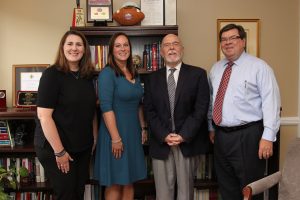
President Larry Dietz, Provost Jan Murphy, and Director Luis Canales in the Office of International Studies and Programs are supporting the new Illinois State Fulbright Community, which connects Fulbright alumni with those interested in applying.
Dietz, who journeyed on an administrators Fulbright grant to Germany in 1993, called the experience transformative, both for those studying and for the institutions where they teach. “International experiences such as the Fulbright simply changes one’s life,” said Dietz. “The programs engage Fulbright participants with the host institutions and communities, in addition to participants’ teaching/research activity, thereby expanding relationships between Illinois State University and persons across the globe. I wish that more people knew about these opportunities and took the time to write proposals to participate.”
Faculty can contact Associate Professor Erin Mikulec, who is the Fulbright scholar liaison, and students can contact Associate Professor Lea Cline, who serves as the student program advisor. More information can also be found through the Office of International Studies and Programs, by following @FulbrightPrgrm on Twitter or #Fulbright@ISU.
Rachel Hatch can be reached at rkhatch@IllinoisState.edu.

